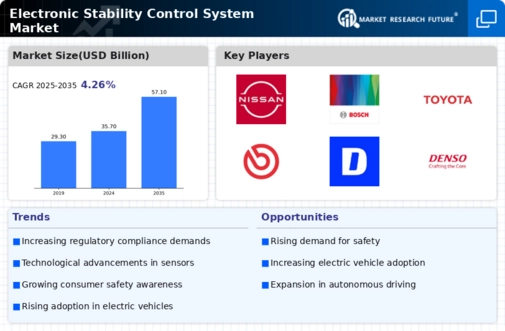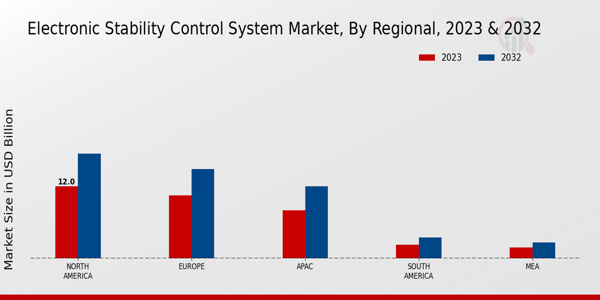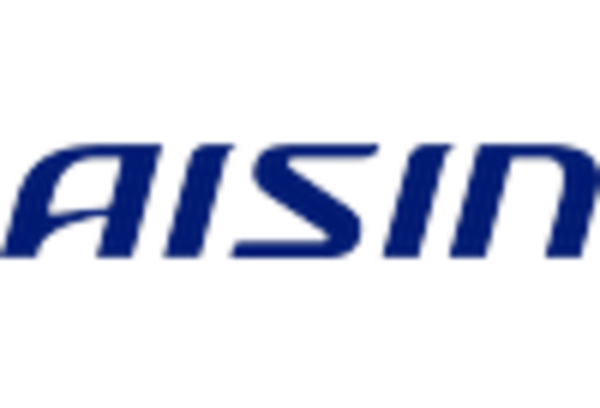Growth of the Automotive Industry
The Electronic Stability Control System Market is closely tied to the overall growth of the automotive sector. As vehicle production increases, so does the demand for advanced safety features, including electronic stability control systems. The automotive industry is witnessing a resurgence, with projections indicating a steady rise in vehicle sales over the next few years. This growth is attributed to factors such as rising disposable incomes and urbanization, leading to increased vehicle ownership. Consequently, manufacturers are prioritizing the integration of electronic stability control systems to enhance safety and meet consumer expectations, thereby driving market expansion.
Rising Consumer Awareness of Vehicle Safety
Consumer awareness regarding vehicle safety is a pivotal driver for the Electronic Stability Control System Market. As individuals become more informed about the benefits of advanced safety features, there is a noticeable shift in purchasing behavior towards vehicles equipped with electronic stability control systems. This heightened awareness is often influenced by safety ratings and crash test results published by regulatory bodies. In fact, studies suggest that vehicles with electronic stability control are perceived as safer, leading to increased consumer preference. Consequently, manufacturers are compelled to incorporate these systems into their offerings to remain competitive, further stimulating market growth.
Emergence of Electric and Autonomous Vehicles
The emergence of electric and autonomous vehicles is poised to reshape the Electronic Stability Control System Market. As the automotive landscape evolves, the integration of electronic stability control systems becomes crucial for ensuring the safety and stability of these innovative vehicles. Electric vehicles, with their unique handling characteristics, require advanced stability control systems to maintain optimal performance. Similarly, autonomous vehicles rely heavily on electronic stability control to navigate complex driving environments safely. This trend suggests that as the adoption of electric and autonomous vehicles accelerates, the demand for sophisticated electronic stability control systems will likely increase, further propelling market growth.
Stringent Government Regulations and Standards
The Electronic Stability Control System Market is significantly influenced by stringent government regulations and safety standards. Many countries have implemented mandatory requirements for electronic stability control systems in new vehicles, recognizing their role in reducing accidents and fatalities. For instance, regulations in various regions mandate that all passenger vehicles must be equipped with electronic stability control systems by a certain date. This regulatory push not only enhances vehicle safety but also drives manufacturers to invest in the development and integration of these systems. As a result, compliance with these regulations is likely to bolster the market, ensuring that electronic stability control systems become a standard feature in the automotive industry.
Technological Advancements in Automotive Safety
The Electronic Stability Control System Market is experiencing a surge in demand due to rapid technological advancements in automotive safety features. Innovations such as enhanced sensor technologies and improved algorithms for vehicle dynamics are driving the integration of electronic stability control systems in modern vehicles. As manufacturers strive to meet consumer expectations for safety, the adoption of these systems is becoming increasingly prevalent. According to recent data, vehicles equipped with electronic stability control have shown a reduction in accident rates by approximately 30 percent. This trend indicates a growing recognition of the importance of stability control systems in enhancing overall vehicle safety, thereby propelling the market forward.


















Leave a Comment